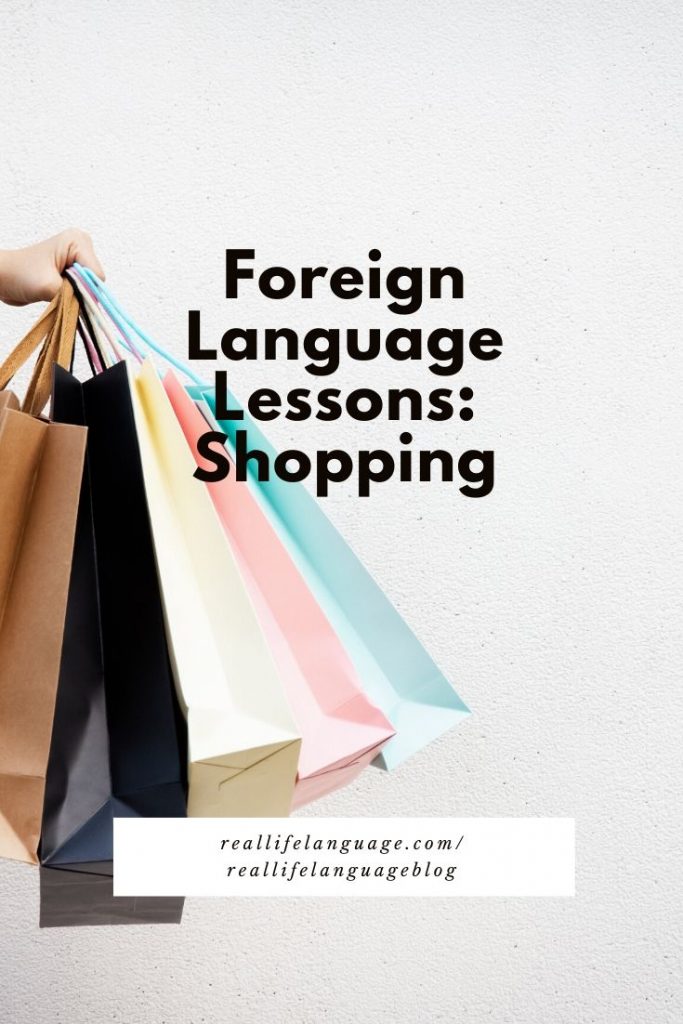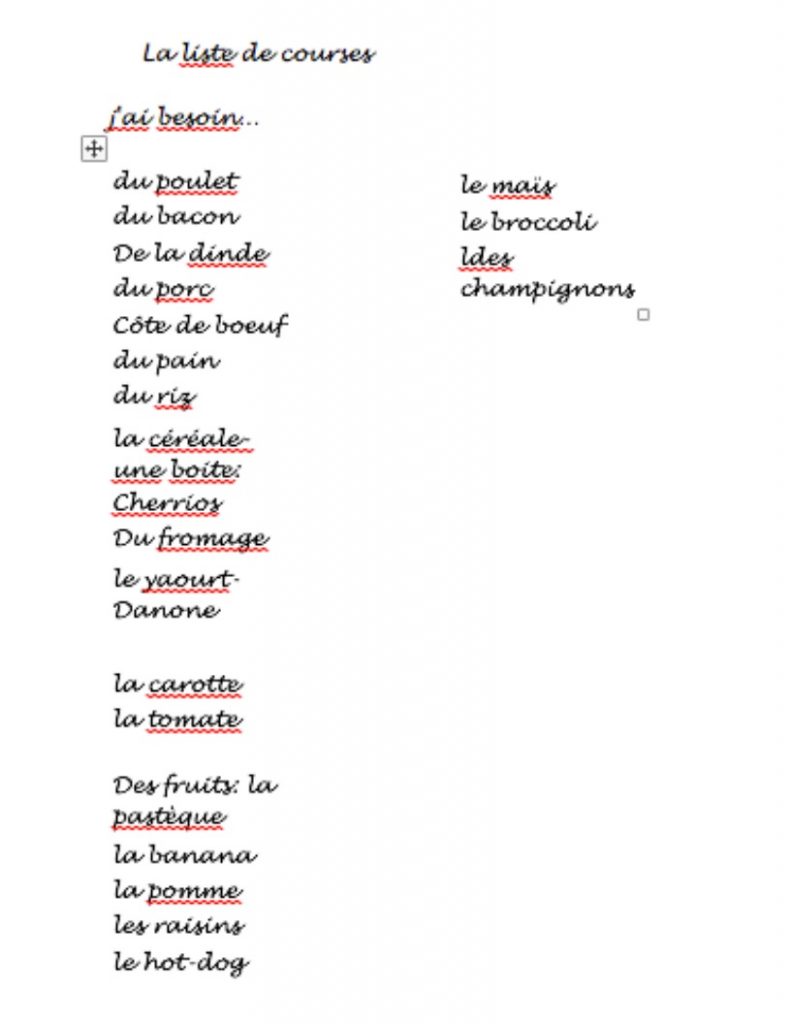
Foreign Language Lessons: Shopping
Activities that simulate shopping are super valuable for beginning language students. They recycle lots of vocabulary, are interactive and allow for movement and creativity. Here are some of my favorites.
Shopping
Beginner/A. Simple lists of vocabulary. Put them in teams, give them the list and scavenger hunt with the students collecting the items. I love creating shopping lists for food, or furniture when I moved house. They create a relevant active world language reading lesson.
Intermediate/B. The students have to create lists that they give to others. For example, they might make a list of chores they want someone to do. This is interactive and fun.
Advanced/C. If you can’t take them abroad, you can go online with the list. I love to have my students shop at FNAC or El Corte Inglés. It’s a great way to interact with Spanish language and culture. IKEA in different languages makes a fun world language lesson, too.

Do my shopping. I love this activity. I bought target language food packages from Teachers’ Discovery and put them together. I found the two baskets at the dump one day.
I divide my class into teams and put all the food in the middle and each team has a basket. Students take turns doing my shopping. Essentially they have to get the item or items I’m talking about. I might say one item or I might talk about making a salad for example, and they have to get items for me to make that. Students then switch places and take turns for each time. At the end when all the food has been bought, we count up how many people got how many items of food. And the team with the most items of food is correct, is the winner.
This is a super fun TPR activity. It’s great. After you’ve introduced foods a bit and involves a lot of listening and reading. Do my shopping groups. I hand out a shopping list and their job in groups is to do my shopping. They’re not allowed to use any aides, their telephones or get any help. And they have to either get the item from my food items or find it in the catalog or draw it. Budget. This is a super fun activity. You give students a certain amount of money and they have to create a budget.
I always like to use Euros because I’ve spent a lot of time in Spain, but you can use any currency you want. You talk briefly about things like rent and bills. Maybe you want to do some of that research beforehand. With the money that’s left over, the students get to shopping. I provide them with some links of places that they can go shopping in my target language country. They then buy the items. They can print the pictures out or copy and paste them into a document, talk about what they bought, why they bought it, how much it cost, and if they have any money leftover.
It’s a great way to interact with target language products, get lots of reading and speaking activity at the same time. Online shopping for different themes I really like to do online shopping. For example, a fun activity to study school supplies is to give your students a link to a website like Fnac. You give them a list and they do their shopping, similar to how they did it in Budget. They can copy and paste the items into an online document and how much it cost. This online document then serves as a speaking prompt and they share with the class what they got. You can do this with any theme but just will have to do the research for the stores that you want to show them. For example, I might pick Zara or Mango for clothes, but that’s because I’ve spent so much time in Spain.
Furnish my New House from Ikea. I created this activity when I actually bought a new house. I didn’t have the students furnish my house, but Ikea has lots of online resources in many languages and I also have lots of catalogs from Ikea in Spain. It’s very similar to the do my shopping group activity, where the students will be given a list of tasks, items to buy or rooms they must furnish in this case. And they must complete the task without help, aids or translators. They then present what they got. It’s great fun.
Market. I love market day. I tend to do this after we’ve done numerous themes like clothing, food, school supplies, et cetera. The students are all responsible for bringing in their items or they can simply draw and price their items on a flashcard or a piece of poster board. They then have to practice being a buyer and a seller. They must completely complete the exchange as a buyer and seller in the target language. When we’re ready to do the actual assessment, half the class sets up their markets and they are the sellers and the other half is the buyers. They take whatever money you give them. I have lots of fake euros in my class for this purpose, old plastic credit cards, et cetera, and they go shopping. They then switch roles. It’s great, real life fun.
I also like to put some bargaining in there, which in the Spanish speaking culture, is very common. You may want to do something different in your culture. Shop for my trip. This is a super fun one. I give students a list of activities that I plan to do during a trip. Again, without help or aids in groups, they must create or find whether online, drawn or in person, all the items that I need in place them in a suitcase, real or just a bag. They then present what they bought and I buy the bundle for the personal shopper that most accurately got my needs correct. Clothing. Buying clothes is a great way to practice daily life in the Spanish speaking world.
I like to pretend this is a department store. My students have to do a dialogue where one is the client and the other is the sales person and I give them all specific tasks. For example, on their cards, they may have to go shopping for a relative or buy something for a party and they have to do the interaction completely in the target language. They practice things like colors, numbers, clothing, what size, how much does it cost? Lots of culture in there too. Before doing this, I sometimes to do an activity where the students go shopping. I give them a list and a list of tasks similar to what we do in the role play. So for example, the students might need to have a list of things that need to be bought, dress for being a guest at a wedding, a birthday present, et cetera, a bathing suit. They then search around for those items and create an online document where they’ve “bought” those items for me.
https://www.teacherspayteachers.com/Product/Spanish-Clothing-Lessons-Unit-1648207
Looking for more ideas? Check these out: http://reallifelanguage.com/reallifelanguageblog/2019/09/16/world-language-class/
I share ideas for foreign language lessons on Pinterest and Instagram, too.